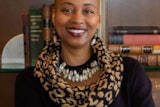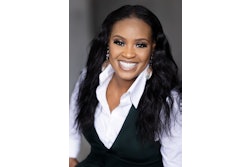National Underground Railroad Freedom Center Celebrates First Year
CINCINNATI
The National Underground Railroad Freedom Center opened a year ago this month hoping to address freedom and diversity issues everywhere, not just in a city where the Black and White divide erupted in riots in 2001.
Officials expected about 260,000 visitors the first year. Instead, it drew 280,000 to become one of the city’s biggest attractions.
With an annual budget of more than $10 million, the Freedom Center’s ability to sustain itself has yet to be tested. Museums tend to get their biggest crowds when they’re new, said William Billingsley, executive director of the Association of African-American Museums, which has more than 240 member museums.
“There’s a wonderful exhibition at the Constitution Center (in Philadelphia) on Abraham Lincoln in the Civil War period,” said Spencer Crew, the center’s president and executive director. “There’s also a really wonderful exhibition at the Holocaust Museum (in Washington, D.C.) on the Sudan.”
Although the Underground Railroad was very active around Cincinnati before the Civil War, the city also has a record of racial problems. Just four years ago, there were three days of riots following the fatal shooting of an unarmed Black man who fled from a White police officer trying to make an arrest.
The Freedom Center does not deal specifically with those riots but has programs that address race relations and a current-events area called “The Struggle Continues.” It includes pictures of the Cincinnati riots as a way of highlighting issues the city faces, Crew said.
The first part of the National Underground Railroad Freedom Center’s name comes from the loose network of safe houses and escape routes that runaways followed northward in the 1800s. The second part represents the continuing struggle for freedom — from illiteracy, genocide and hunger — by people everywhere.
One of the most popular exhibits is a kiosk that describes choices a slave contemplating escape might make — such as what time of day to flee, what route to follow — and tells participants the likely outcome of the plan they enter.
The copper-plated, 158,000-square-foot building overlooks the Ohio River, symbolic of the last obstacle facing runaways from slave-holding states in the South.
It can be a bitter reminder of slavery in America. A rough-hewn slave pen, where more than 30 slaves could be held captive with barely room to move, is a particularly moving exhibit.
But the overriding message is of tolerance, diversity, interracial cooperation and awareness that people around the world still are held in some form of bondage.
Ezell Pittman, a professor at the Columbia, S.C., branch of Webster University, brought a group that found the slave pen deeply emotional. The two-story cabin is about 30 feet long and 20 feet wide and is believed to have housed more than 30 slaves at a time.
“It’s touching, it’s moving and it’s depressing,” Pittman said.
The Freedom Center is among several Black history museums enjoying a surge of popularity. They include the DuSable Museum in Chicago, the refurbished Charles H. Wright Museum of African-American History in Detroit and the new Reginald F. Lewis Museum of Maryland African-American History & Culture that opened in Baltimore in June.
“One of the things that’s very important to us is the idea of dialogue and conversations around issues of diversity and issues of race. The more we can do that, the more we will be working toward the mission we had in the beginning,” Crew said.
— Associated Press
© Copyright 2005 by DiverseEducation.com















